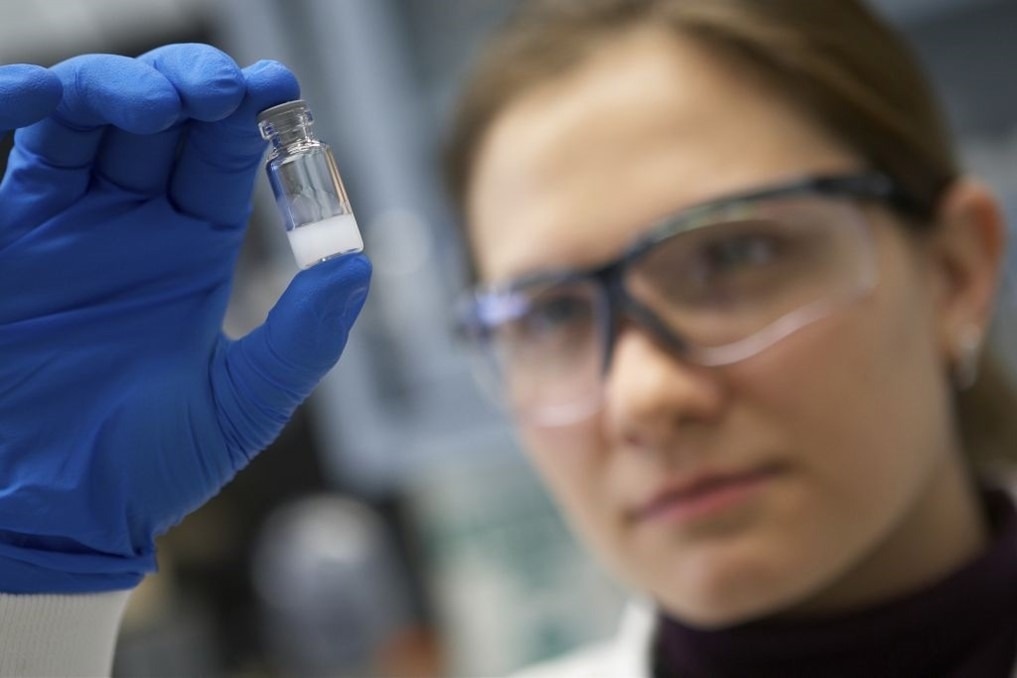Transition metals play a crucial role in various industries, such as pharmaceutical production, by exchanging electrons with supporting ligands to create complexes that facilitate catalytic reactions. In these reactions, both the metal center and the ligand are essential components. While many transition metal-catalyzed photoreactions have been developed, there have been relatively few reports on new ligands.

Novel ligands can redefine reaction capabilities and improve catalysis for the production of pharmaceuticals. Novel PNP-pincer ligands can help platinum-based complexes catalyze reactions under visible light irradiation. The improvement in the use of transition metal catalysts will help improve industrial processes such as the production of pharmaceuticals, dyes, pigments, etc. Image Credit Sanofi Pasteur from Flickr
Researchers from Chiba University have recently made advancements in this field by introducing innovative ligands for the creation of transition metal complexes. These new ligands open up opportunities for novel reaction capabilities, expanding the possibilities for catalysis in various applications.
Transition metals could develop catalytic complexes that have the potential to expedite several chemical processes, particularly in the production of pharmaceuticals and various dyes, pigments, and laboratory reagents like sulfuric acid.
The usage of light-emitting diodes (LEDs) has increased the use of visible light in reaction catalysis, and researchers have come up with photo-redox catalysts made of ruthenium and iridium, which streamline catalysis when being irradiated with specific wavelengths of light.
Additionally, researchers have even illustrated visible light photoreactions along with palladium complexes without using photo-redox catalysts.
While numerous such transition metal-catalyzed photoreactions have been developed, there has been restricted development of new ligands for such reactions; most studies utilized present ligands developed for thermal reactions.
As a result, there has been a noticeable absence of progress in the development of ligands designed to interact specifically with transition metal catalysts in photoreactions. This limitation has hindered our ability to fully harness the potential of these reactions.
A research group headed by Professor Tetsuhiro Nemoto from the Graduate School of Pharmaceutical Sciences at Chiba University in Japan came up with novel ligands that could be utilized in photoreactions with transition metal catalysts.
Also, they illustrated how the developed ligands interacted with various transition metals to generate different catalytic outcomes for photoreactions.
The research group included Mr. Yu Matsuda from the Graduate School of Pharmaceutical Sciences at Chiba University and Dr. Masaya Nakajima, who was affiliated with the same institute during the study but is currently affiliated with the Graduate School of Pharmaceutical Sciences at the University of Tokyo.
The study was published in ACS Catalysis on August 4th, 2023.
The scientists used commercially available 9-phenylacridine to make four acridine-containing PNP-pincer ligands, which were further utilized to make complexes with palladium, nickel, copper, platinum, and cobalt.
The research group assessed the catalytic activity of the complexes for a particular photoreaction known as transfer hydrogenation, a common reaction utilized in several industries. While the nickel complex did not react in an effective manner, the platinum and palladium complexes successfully catalyzed the reaction to offer a high yield of the final products.
Particularly, the scientists discovered that the newly developed ligands enabled the platinum complex to catalyze a reaction successfully in the existence of visible light (blue LED irradiation) in a stoichiometric way.
This implies that the exact values of reagents required and the quantity of product obtained could be evaluated mathematically. The accuracy of the catalysis will enable the simplifying of industrial processes, like the production of medicines.
Moreover, the new platinum complex can catalyze the hydroxy or alkoxy alkylation of olefins—a reaction that cannot be catalyzed with present well-known ligands.
The fact that such photoreactions did not occur in the presence of well-known ligands emphasizes how the newly designed ligands could assist in specifying new reaction capabilities.
This research reveals a new reactivity of platinum that was previously unknown. As a result, it has become possible to synthesize new kinds of molecules more efficiently, potentially finding applications in the manufacturing of novel materials and pharmaceuticals.
Masaya Nakajima, Graduate School of Pharmaceutical Sciences, Chiba University
“Visible light is utilized as the energy source for such reactions. Thus, sunlight can be used as an endless source of energy, and technological advancement could allow us to perform photoreactions without the constraints that come with the arrangements necessary for thermal reactions, ultimately helping us resolve emerging energy issues,” concludes Dr Nakajima on an optimistic note.
The development of new ligands for transition metal complex photocatalysis could make new possibilities and rethink reaction capabilities, thereby enabling novel solutions to the difficulties that have been faced currently.
Journal Reference
Matsuda, Y., et al. (2023) Acridine PNP-Pincer Ligands Enabling Transition Metal-Catalyzed Photoreactions. ACS Catalysis. doi.org/10.1021/acscatal.3c01654.